In a word, theyre evocative reminders of lifes continuity.
It naturally follows, then, that Curriers work revolves around humanitys relationship to nature.
For years, the artist has combined floral imagery and portraiture, reimagining the limits of the classical style.
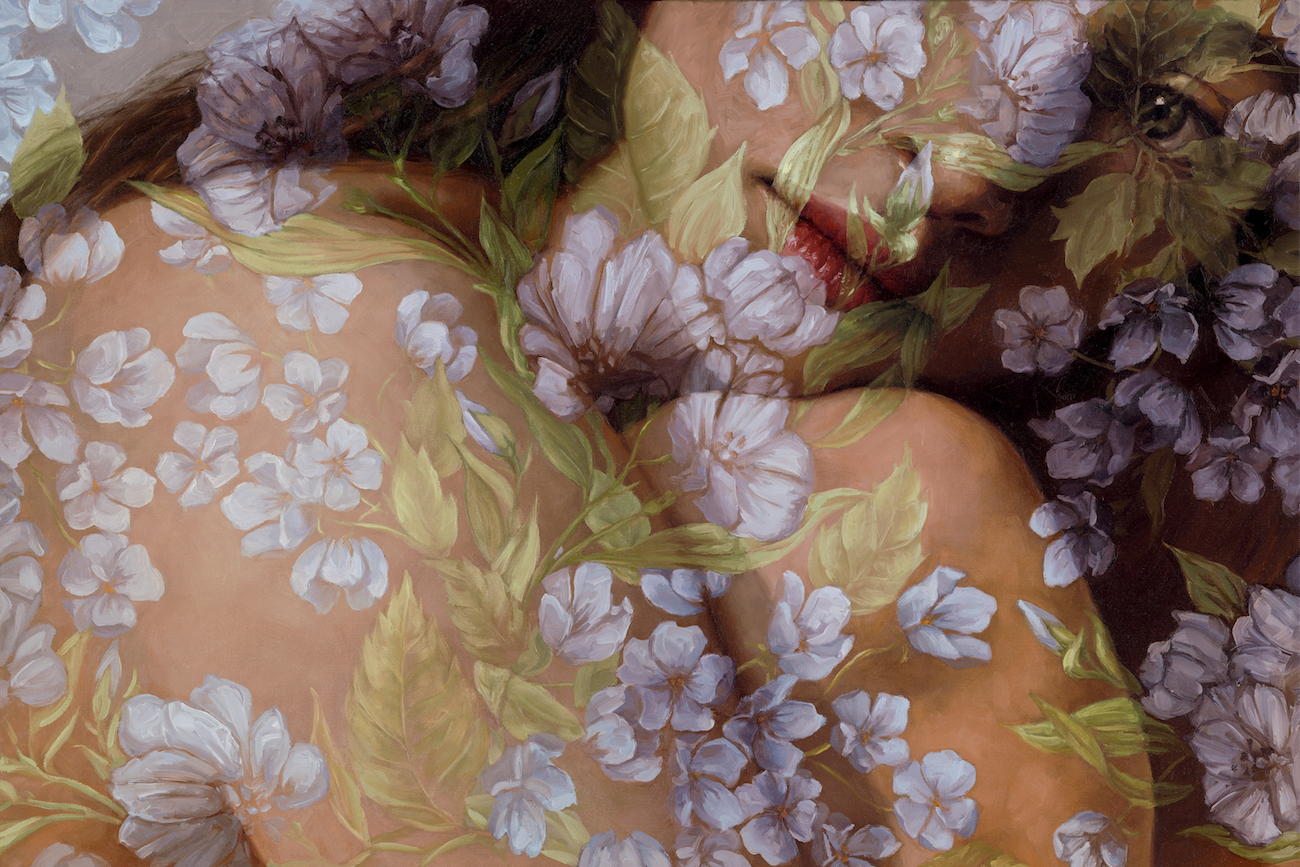
Her paintings abound with delicate petals, each translucent enough to reveal the faces hiding beneath them.
The resulting canvases contain a rare sense of magic, where women and flowers become a single entity.
Magic, Currier believes, is central to her practice as well.
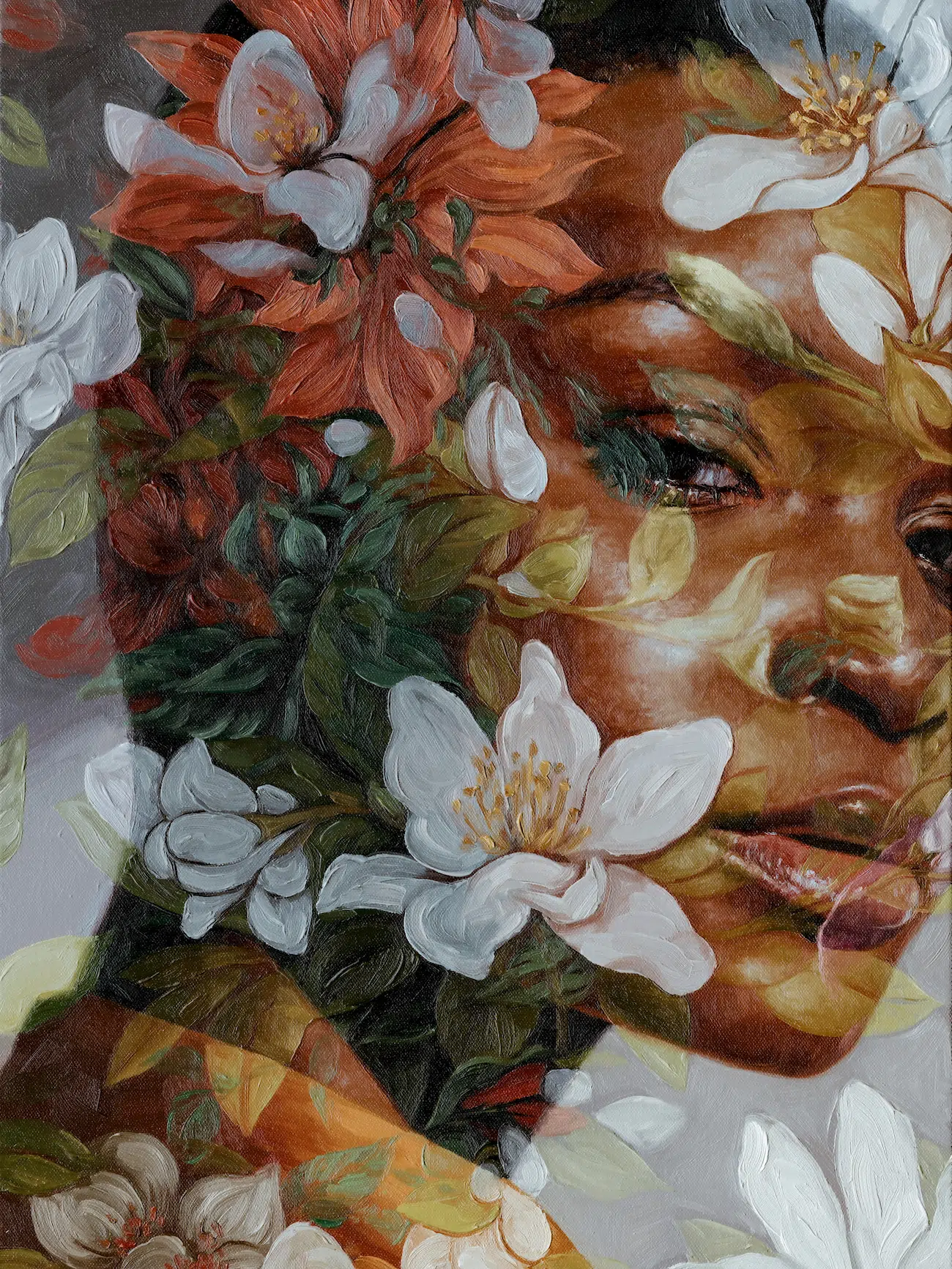
Their dreamy surfaces invite further inspection and satisfy the artists goals of showcasing the ephemeral beauty of flowers.
Read on for our exclusive interview with the artist.
What originally drew you to painting as your preferred medium, and how did you develop your personal style?
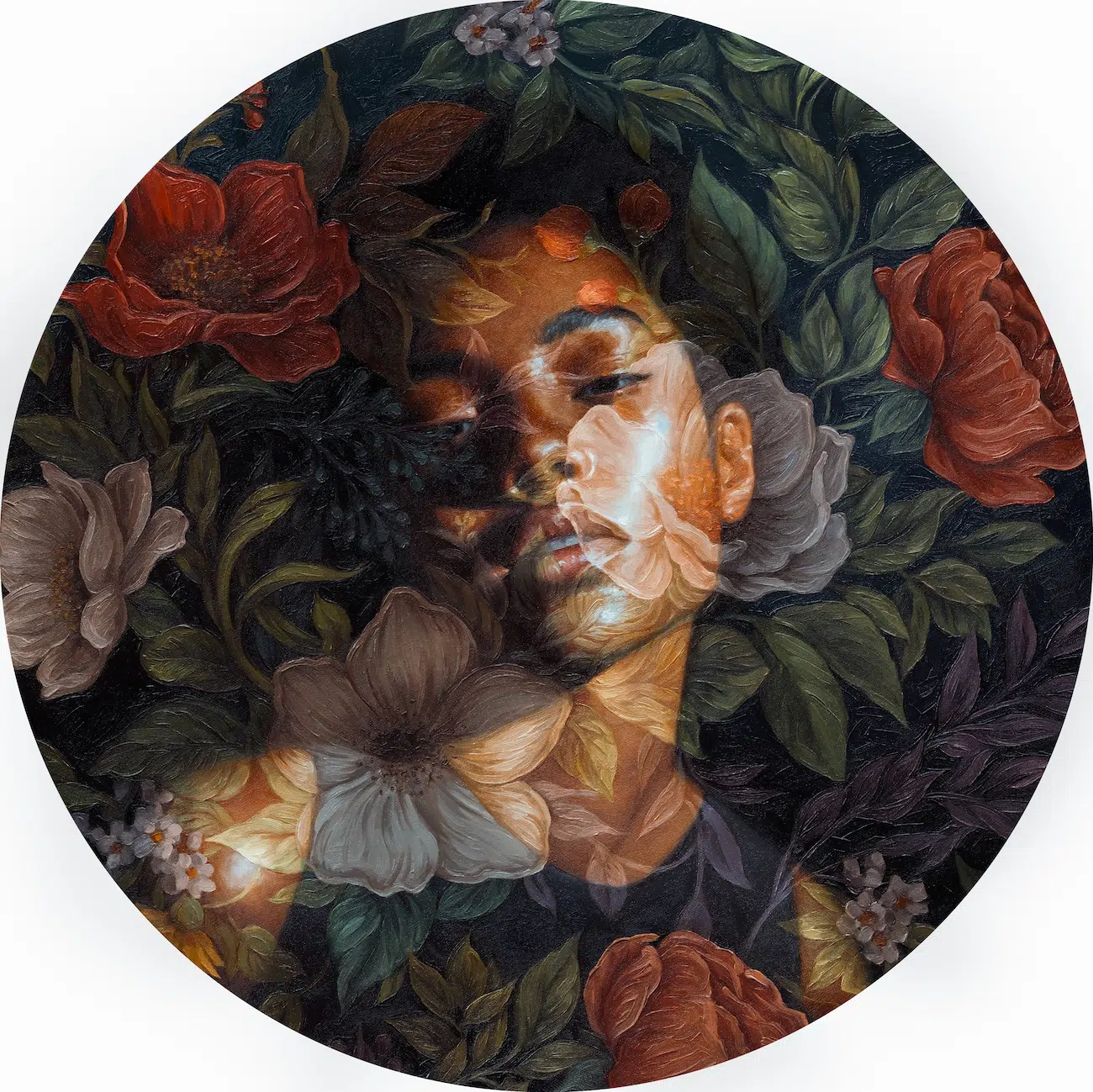
For as long as I can remember, I have loved paint.
I have been painting for almost half my life now, and I am still not over this.
Its all true and then some.

This is, in essence, how I found my style.
I worked, and worked, and worked more, and while I was working, patterns emerged.
It took nearly a decade of painting consistently for me to cultivate the distinct voice my work has today.

Even now, I feel like Im still just getting started.
There is no end goal.
Personal style is just shorthand for saying what we need to say at any given point in our journey.

It willand shouldbe in a constant state of evolution.
I think thats part of the magic.
What is your creative process?

What are the stages of creating one of your paintings?
It starts with play.
The earliest stages of a painting are where most of the creativity lives for me.

I lay different floral patterns over different figures and keep playing with them until something clicks.
This part is where curiosity lives.
I often have an idea of what I want to say or how I want a piece to feel.

The only rule for this stage is that anything goes.
Theres a certain energya palpable sense of urgency to be brought to life.
Then, the real work begins.

There is no secret.
I paint the image all at once, workingalla primaacross the canvas, just referring to my digital mockup.
I paint what I see.
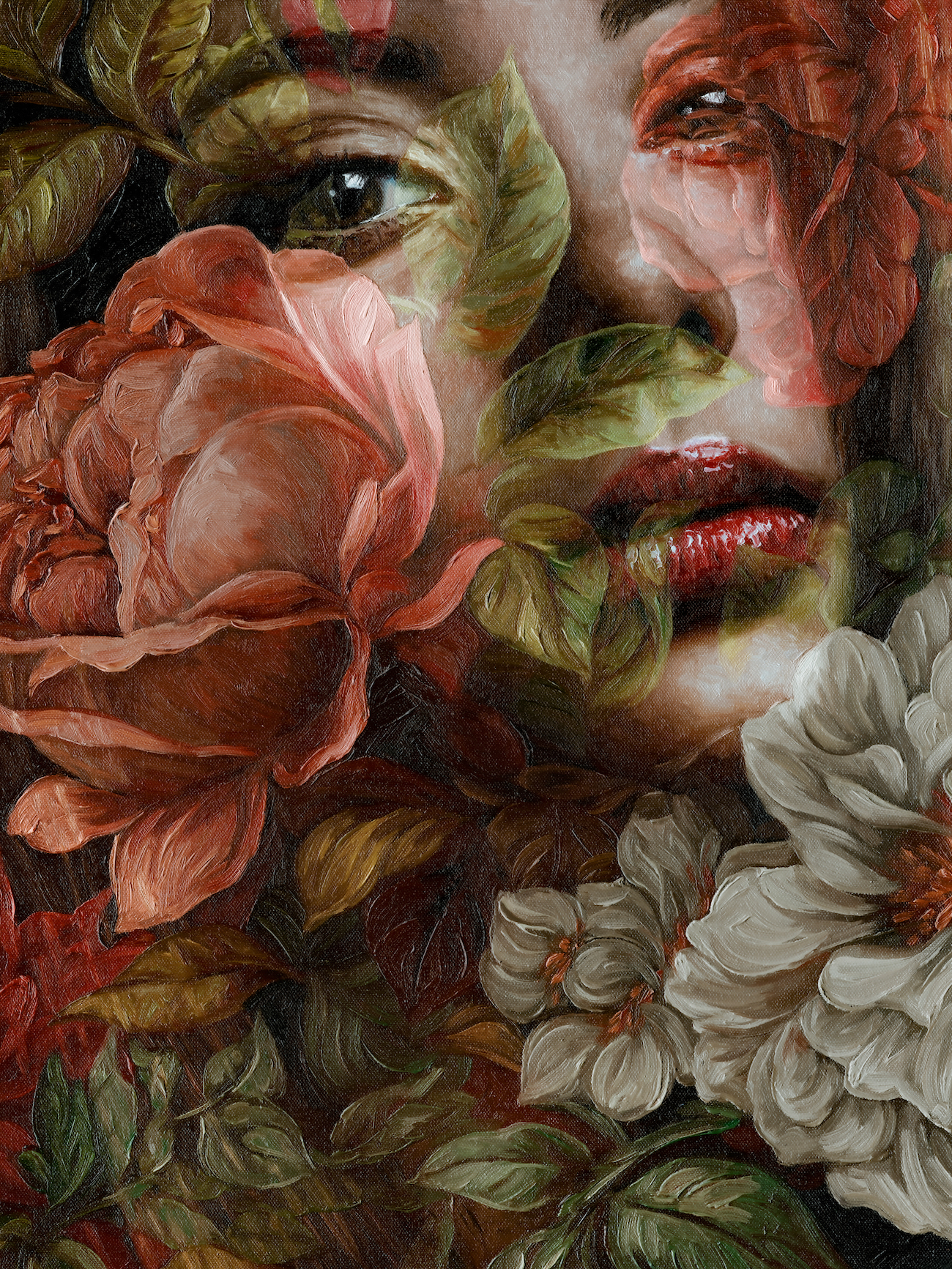
The illusion of transparency is just that: an illusion.
What intrigues you about floral and botanical imagery, and how do you incorporate this throughout your art?
Flowers have always been more than just beautiful.
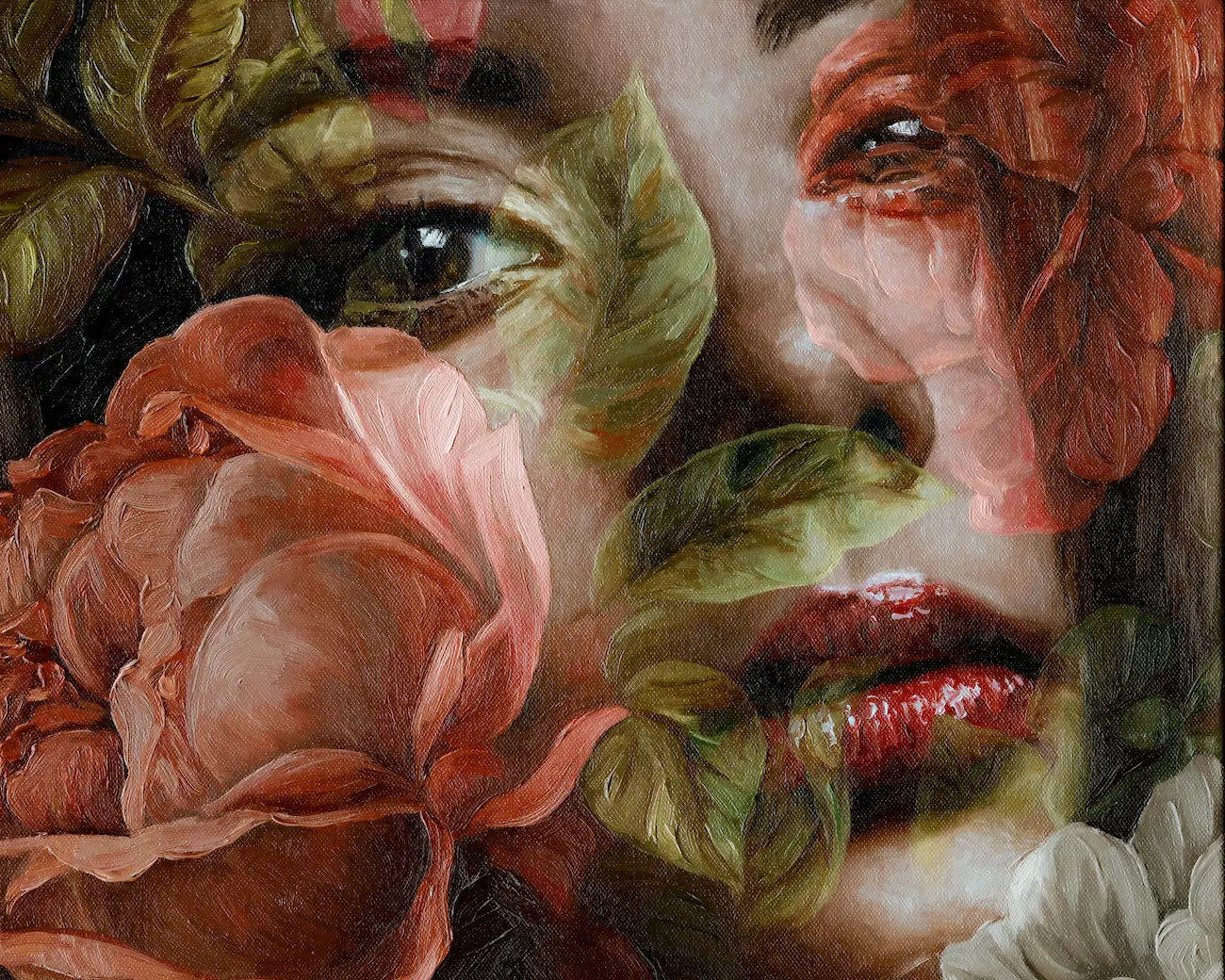
They hold space for us, marking our greatest joys and deepest grief.
We give them to our lovers.
We lay them at graves.

We take a stab at keep them.
This tension is part of why I keep my floral patterns both sheer and illustrative.
They are more reminiscent of vintage wallpaperstheir original inspirationthan of real flowers.
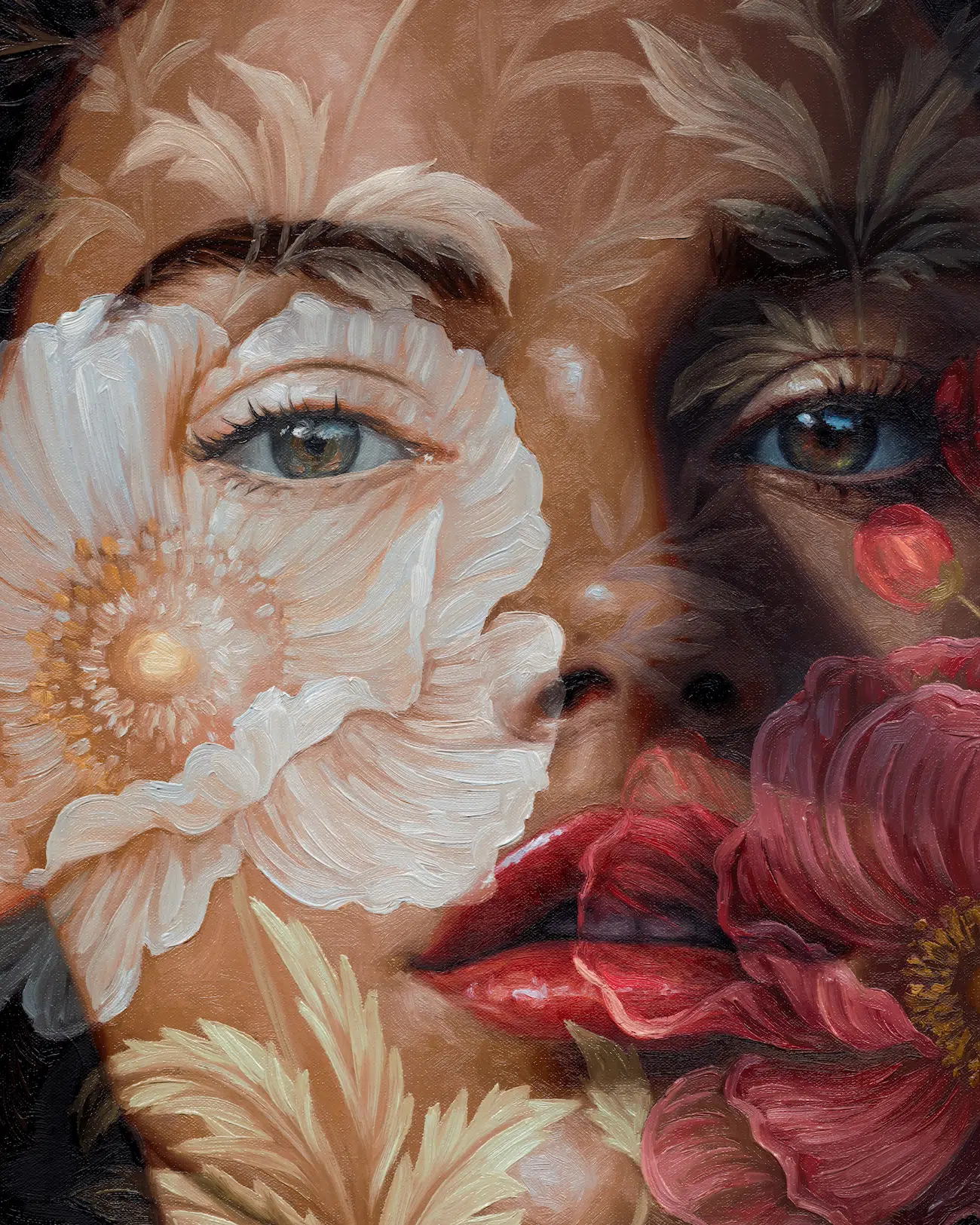
What themes do you find yourself returning to again and again in your art?
Creativity is the bravest, truest response to depression that Ive found.
In the face of trauma and abuse and injustice… to turn around and make something.
As a woman, to use my voice and take up space.
Look at the beauty.
For now, flowers are the metaphorical language that feels best suited to hold this idea.
I love them for all their symbolism, and for the way they create an unapologetically feminine aesthetic.
How do you achieve such bold and textured canvases?
What elements do you keep in mind when creating a composition?
My favorite art nearly always shows evidence of the artists hand.
I want to see the recorded movement of every stroke.
But up close, it’s possible for you to see the paint being paint.
I use an obscene amount of it.
I work with bigger brushes.
I venture to move fast to keep the energy in it.
Oils are so alive.
It was through dozens and dozens of these that I found my voice and my stroke.
They eventually combined into large compositions of figures immersed in foliage and flowers.
From here, I think things are about to get a lot weirder.
What do you hope people will take away from your art?
Perhaps thats as straightforward as feeling inspired, or simply a closer noticing of something beautiful.
I grew up in a very isolated, high-control religious environment.
There was a clear role predetermined for me, especially as a woman in that world.
I hope that people, especially other women, can feel that journey in my paintings.
My breaking free is inextricably tied to my choice to keep living.
They are one in the same, really.
Every brushstroke of every single one of my paintings is an act of reclaiming my own life.
Reclaiming my agency and identity in the face of control and abuse.
Reclaiming beauty and hope in the face of grief and despair.
I hope the resulting art serves as an invitation for the viewer to reclaim their own life, too.